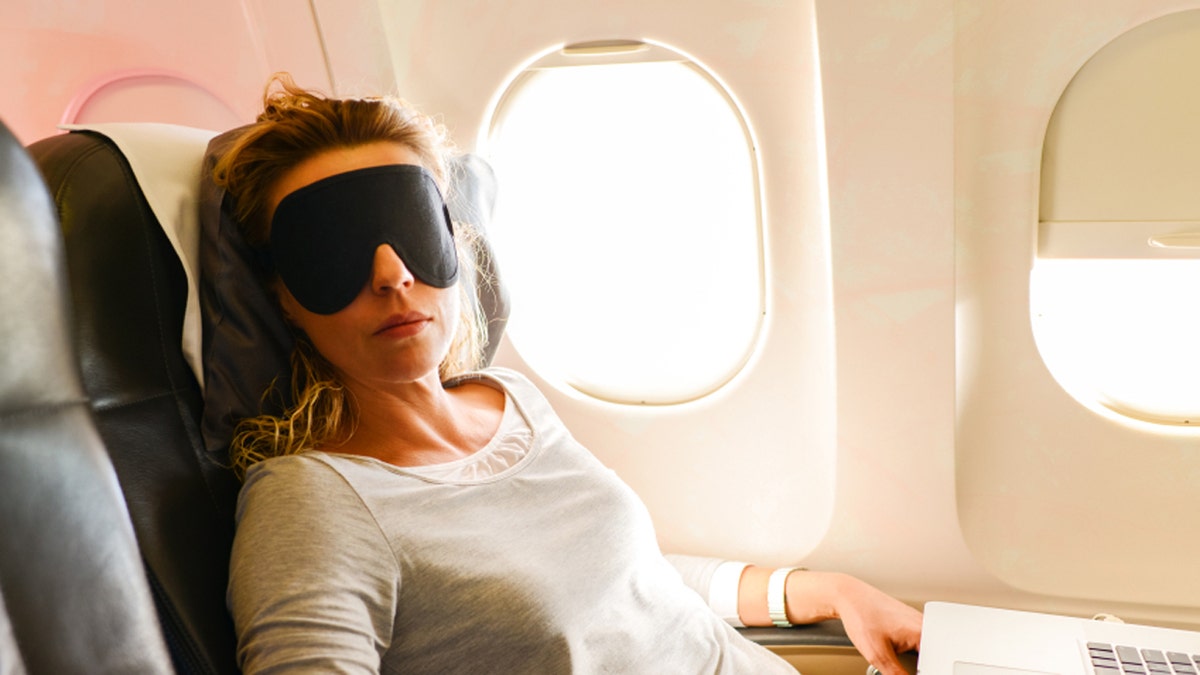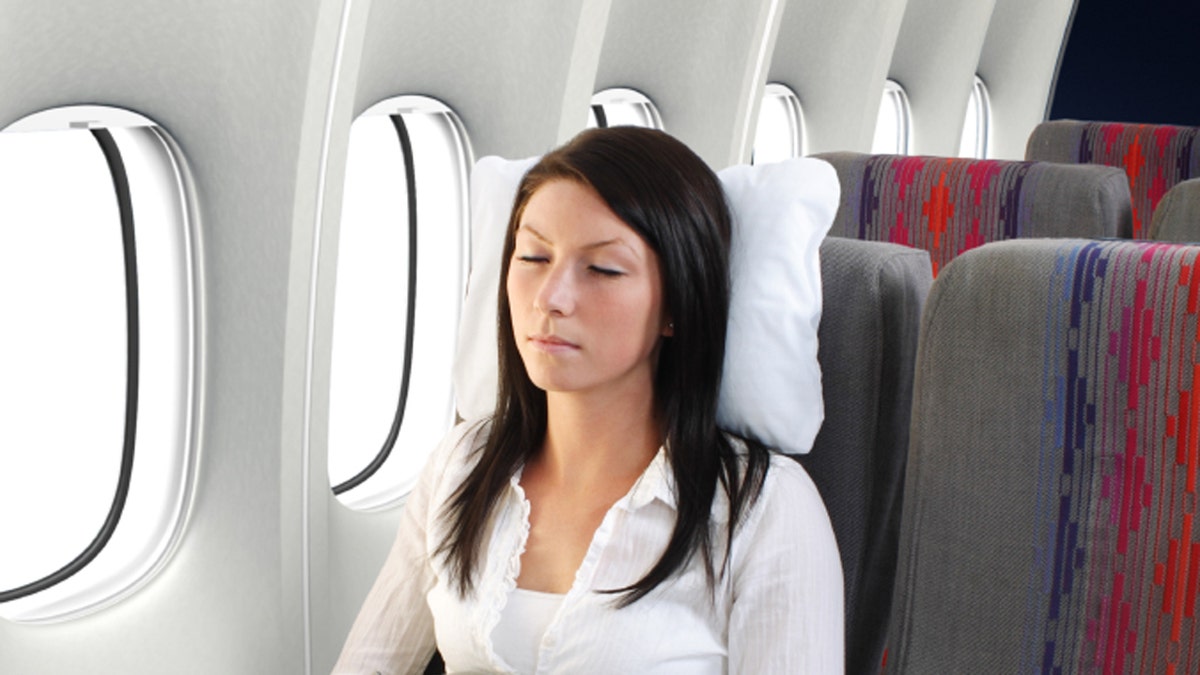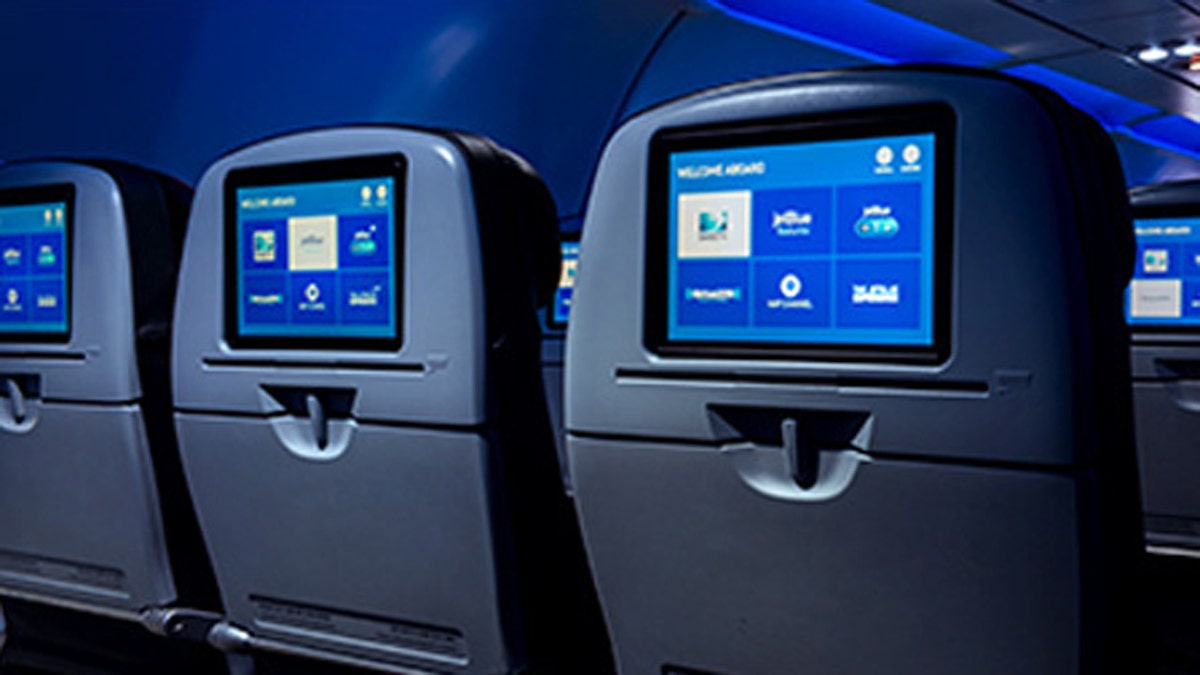It is the bane of travelers getting on a plane for both business and pleasure—difficulty falling asleep in a seat, especially in coach, and the attendant horrors of jet lag after landing. Studies have shown that lack of sleep can decrease brain performance by 20 percent, so it's crucial to anyone crossing time zones to rest as much as possible during the flight.
Washington, D.C.–based clinical sleep educator and RN Terry Cralle shared her tips for powering down (and getting at least a power nap) on a flight.
1. Plan ahead.

Mature Woman having nap in a plane (iStock)
"Planning ahead, though it sounds simple, can be much harder in practice. However, it can make a huge difference in your ability to sleep well before a flight and on it," says Cralle. If you take the time to do things like pack, plan your transportation to the airport, and organize the things that need to happen at home while you're away in the days leading up to a flight—not the night before—you will not be nearly as stressed-out, and sleep will come more easily.
2. Meditate.

(iStock)
"Recently, guided-meditation audio apps have been gaining a lot of popularity, and rightly so," says Cralle. "It has been shown that these gentle talks help the brain to relax quickly, especially so when the listener is prompted to imagine they are using all of their senses. Say, if you are guided to a beach-side scene where you imagine hearing the waves, watching the sky, and smelling flowers and the salt air, it really helps you to disengage and fall asleep."
3. Pack lavender oil.

bottle of lavender oil with fresh flowers on wooden background. apothecary herbs. selective focus (iStock)
"I'm a big fan of lavender oil, it's so calming, and is a great, simple thing to bring along on a trip," says Cralle. "A small study was recently done that shows that people who inhaled 100 percent lavender oil before and during sleep had decreased blood pressure and deeper sleep patterns than those who didn't." Put a few drops onto your travel pillow, apply it to your temples and wrists once you've settled into your seat, and prepare to dream.
4. Ignore in-flight entertainment.

(JetBlue.com)
No matter how much you want to see the latest blockbuster, Cralle says, "Skip the movies and TV—the end result of staring at a screen during much your flight means that light is hitting your retinas, and telling your brain and body that it's daytime, and sleep will be much tougher to achieve."
5. Make to-do lists.

(iStock)
To train your brain not to race and worry when it's time for rest, Cralle recommends a simple daily practice. "Write down your to-do list well before bed. You want to get any obligations and important tasks out of your mind and onto paper during the day so that the mind is clear at bedtime."
6. Bring something comforting.

(iStock)
To get great shut-eye on a plane, Cralle says, "You want the environment to be as comfortable and predictable as possible. If you have a travel pillow you love, always pack it when traveling. Its scent and familiarity will give your brain and body a behavioral cue that it's time to relax and let go." The same effect can be achieved by a cozy scarf or sweater.
Check out more airplane sleeping tips.
More from Conde Nast Traveler
The Best U.S. Airlines: Readers' Choice Awards
The Friendliest and Unfriendliest Cities in the World
The 100 Best Hotels & Resorts in the World
